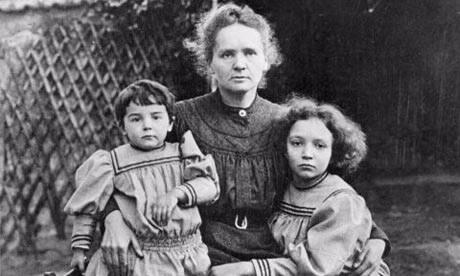

Published on the 8th May 2015 by ANSTO Staff
 |
| Marie Curie with her two daughters. Photo credit: AFP |
As early as the turn of the century, female scientists were successfully combing research with motherhood and have helped pave the way for the talented female scientist we have working in research organisations like ANSTO today.
Two women, Maria Mayer and Marie Curie, managed to combine earning a Nobel Prize with motherhood. Jocelyn Bell Burnett collaborated on research that led to the discovery of pulsars.
Another, Mileva Maric, was married to one of the most famous physicists, Albert Einstein.
Albert Einstein met Mileva Maric as a student at the Swiss Federal Polytechnic and they married in 1903. She was a mathematician who also read physics with her husband, who considered her a ‘creature who is my equal’. They had two sons and a daughter who died in childhood.1
 |
| Mileva Maric Einstein with her two sons. Photo credit: Tesla Memorial Society |
Maria Goeppert Mayer shared the Nobel Prize in Physics in 1963 with Eugene Wigner and J Hans D Jensen for the theory of the atomic nucleus and the elementary particles, particularly through the discovery and application of fundamental symmetry principles. She married Joseph Edward Meyer and had two children, a son and daughter.2
Marie Sklodowska Curie received the Nobel Prize in Chemistry in 1903 in recognition for her work on radioactivity with her husband Pierre and Henri Becquerel. She had two daughters, one of whom who also received a Nobel Prize in Chemistry in recognition for her work on the synthesis of new radioactive elements.3
Northern Irish astrophysicist Jocelyn Bell Burnell worked with Anthony Hewish and Sir Martin Ryle, who received the Nobel Prize for research that led to the discovery of pulsars. She and her former husband Martin Burnell have a son, Gavin. 4